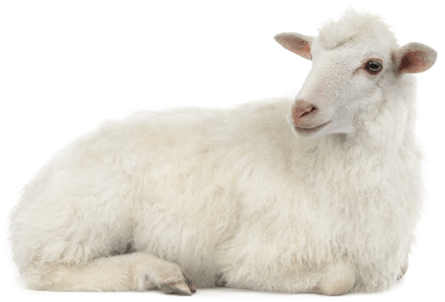Introduction
 Inflammation and immune cell responses are key to maintaining homeostasis in the body. Inflammation plays a central role in the etiology of many immunologically related diseases, such as infectious diseases, respiratory diseases, neurological, metabolic and cardiovascular diseases, and even cancer. Cytokine and/or chemokine concentrations in sheep serum may change significantly before and after infection with disease. By exploring the significant differences in cytokine changes, we can facilitate the study of immune response and pathogenesis and explore corresponding therapeutic targets to provide theoretical guidance for clinical diagnosis.
Inflammation and immune cell responses are key to maintaining homeostasis in the body. Inflammation plays a central role in the etiology of many immunologically related diseases, such as infectious diseases, respiratory diseases, neurological, metabolic and cardiovascular diseases, and even cancer. Cytokine and/or chemokine concentrations in sheep serum may change significantly before and after infection with disease. By exploring the significant differences in cytokine changes, we can facilitate the study of immune response and pathogenesis and explore corresponding therapeutic targets to provide theoretical guidance for clinical diagnosis.
To facilitate sheep-related research in animal husbandry and animal medicine, Creative Proteomics has the ability to provide you with customized sheep cytokine/chemokine panel assays. Based on Luminex xMAP technology, we can measure multiple inflammatory biomarkers simultaneously. Our panels can simultaneously quantify multiple cytokine and marker proteins in serum, plasma and tissue culture supernatant samples.
Detectable sheep cytokine assay targets
We can mainly provide quantitative detection of the following targets, including but not limited to:
| IFNγ | IL-1α | IL-1β | IL-4 | IL-6 | IL-8 (CXCL8) |
| IL-10 | IL-17A | IL-36RA (IL-1F5) | IP-10 (CXCL10) | MIP-1α (CCL3) | MIP-1β (CCL4) |
| TNFα | VEGF-A |
Technology platform
We mainly provide the Luminex xMAP cytokine detection platform. Luminex uses fluorescently encoded microspheres with specific antibodies to different target molecules. The different microspheres can be combined freely to a certain extent so that up to 100 analytes can be tested multiple times simultaneously in a single experiment.
Technical features of Luminex cytokine assay:
- Multiple detection: simultaneous detection of 100 biological targets
- Short experiment time: 2-6 weeks
- High sensitivity: the lower limit of accurate quantification is as low as 0.1 pg/mL
- Save samples: only need a sample volume as low as 25 μL
- Time saving: the experiment process only takes 4 hours
For your different needs, we can also provide the following detection methods:
- Simoa: Ultra-high sensitivity single-molecule protein detection technology. The sensitivity is more than 1000 times that of ELISA technology, and the lower limit of detection reaches fg/mL, achieving effective detection and quantification of ultra-low-abundance proteins.
- Flow cytometry: Highly sensitive fluorescent labeling and detection system, which can detect two or more cytokines in the same cell at the same time.
- Mass Cytometry: A flow technique that uses the principle of mass spectrometry for multi-parameter detection of single cells. It inherits the characteristics of high-speed analysis of traditional flow cytometry and has the high resolution capability of mass spectrometry detection.
- Enzyme-linked immunosorbent assay (ELISA): Use the primary antibody for capture, and conjugate the secondary antibody with an enzyme or radioisotope for detection. Our multiplexing system can detect the expression of multiple cytokines at once.
Sample preparation
- Serum: natural suspicion of blood at room temperature for 10-20 minutes, centrifugation for about 20 minutes (2000-3000 rpm). The supernatant is collected and should be centrifuged again if precipitation occurs during storage.
- Plasma: EDTA or sodium citrate should be selected as anticoagulant according to the requirements of the specimen. After mixing for 10-20 minutes, centrifuge for about 20 minutes (2000-3000 rpm) and collect the supernatant.
- Urine: Collect in sterile tubes and centrifuge for about 20 minutes (200-300 rpm). The supernatant is collected and should be centrifuged again if precipitate forms during storage. Thoraco-abdominal fluid and cerebrospinal fluid are practiced with reference.
- Cell culture supernatant: collect in sterile tubes, centrifuge for about 20 minutes (2000-3000 rpm) and collect the supernatant. For detection of intracellular components, dilute the cell suspension with PBS to a cell concentration of 100 w/ml. Disrupt the cells and release the intracellular components by repeated freeze-thawing. Centrifuge and collect supernatant.
- Cells (whole blood cells, PBMC, sheep immune cells)
- Tissue specimens: After cutting the specimens, weigh them. Add an amount of PBS (pH 7.4) and freeze rapidly in liquid nitrogen for storage.
*Serum and plasma are recommended to be diluted 2 times.
The body fluid samples are stored in a refrigerator at -80 degrees Celsius and transported on dry ice.
If you have identified analytes of interest, you can contact us and we will provide you with a customized sheep cytokine/chemokine panel. We are looking forward to cooperating with you.



